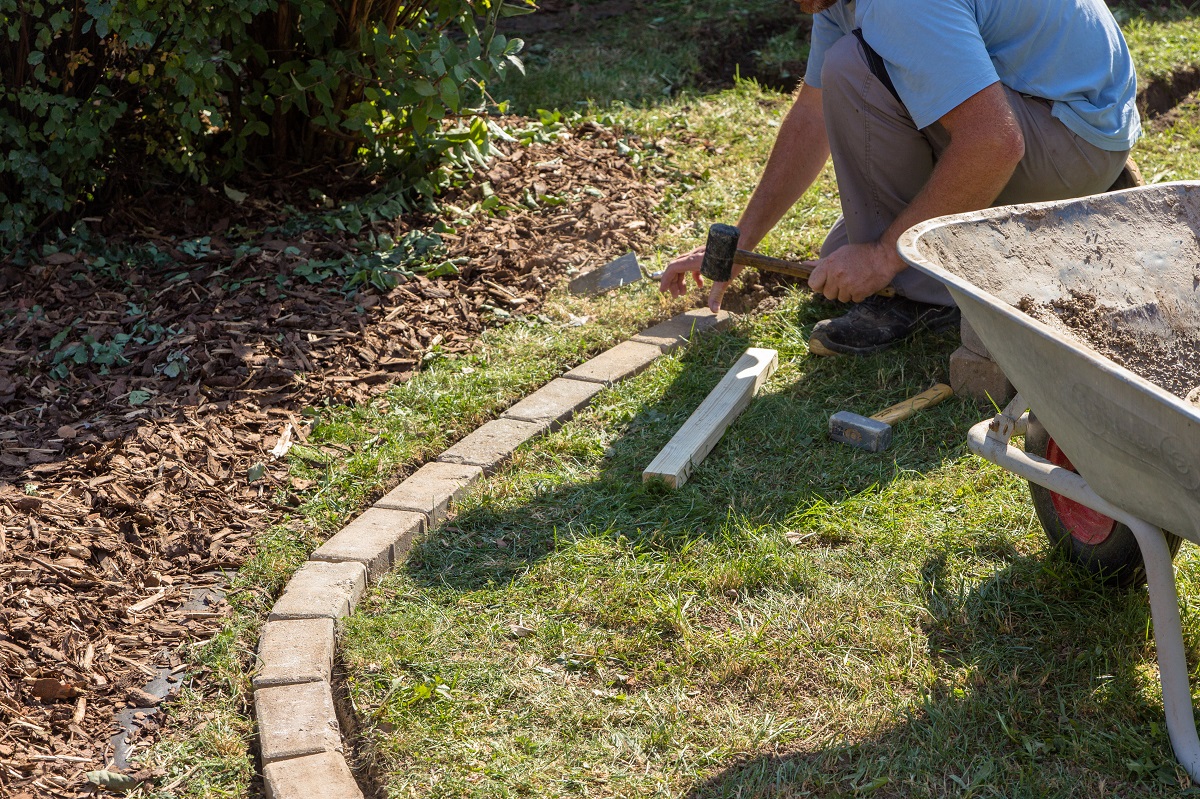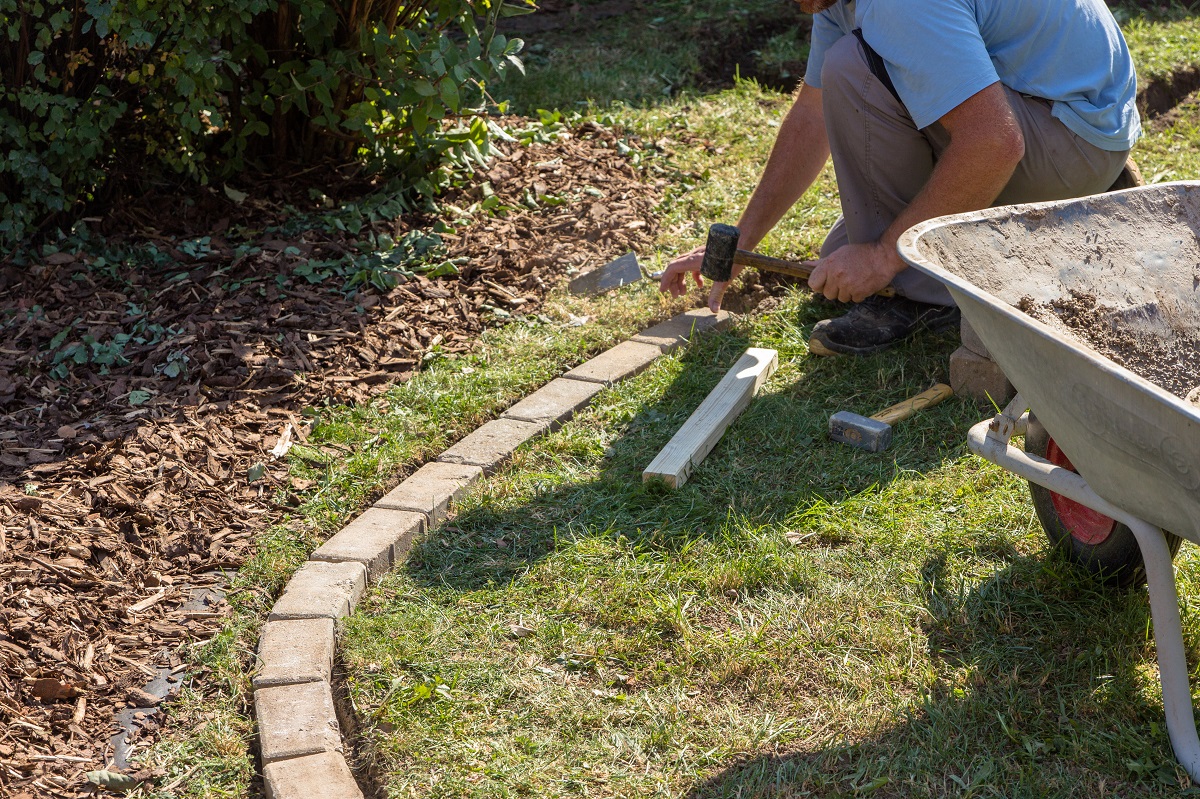
Are you looking to get your garden in shape and make it the space you always dreamed of? The importance of our own outdoor spaces is more significant than ever in the wake of the pandemic so we can hardly blame you for wanting a beautiful garden that is tailored to your exact requirements. Sometimes our gardens need a little more than a few new pots and plants, however, just a little landscaping is required for the transformation we desire. If this sounds like your situation, read on to discover some top landscaping tips for a successful garden rejuvenation. And if you are after some tools for the job, make sure you pick up some high-quality landscaping products to get the project done right.
Plan carefully to keep your budget down
As with a project of any kind, planning is the key to success. Landscaping is no different and if you go into it haphazardly, without proper thought, you can end up having a garden bill that spirals out of control and ultimately not getting the results you desire. As a result, before you undertake your garden transformation, take the time to plan things out carefully. This is the advice of garden designer Lisa Cox, who champions the importance of planning to keep budgets down:
“Take the time upfront to really hone in on the design and what it will take to bring the design to life. If you have a sloping garden, for example, there are ways you can work with the slope rather than building expensive retaining walls. You can plant a slope easily, often with greater effect and it will be much cheaper.
“If you know the size of the terrace, the layout and where you might need other hard landscaping materials, it will make your landscaper’s job of quoting much easier. Equally, if you’re doing the work yourself, you’ll be able to easily work out the materials you need and how much you have in the pot for the paving material itself.”
Definition is key to small spaces

While many of us wish we had many acres of space to match our boundless creativity, unfortunately, that isn’t always the case. Lots of us live in towns and cities and have to work with relatively small gardens. That doesn’t mean you can’t create something spectacular, however. You just need to know what will work for the garden space you have. For Becky Matthews, from the website DIY Garden, it’s all about definition, clear lines, and distinct edges:
“Definition is the key! When dealing with small garden spaces, you don’t have the luxury of blending the different aspects of your garden together. Doing so creates a cluttered, confused appearance that negates any tranquillity.”
Becky and DIY Garden advise that clear lines and distinct edges will “give your space more purpose” and that you shouldn’t worry about overwhelming your garden with lots of features as long as the job is executed correctly, utilising different “textures and colours to break up the areas.”
Decking requires persistent maintenance
Decking can be a wonderful addition to a garden, providing a beautiful seating area to enjoy with friends and family, having BBQs, and making the most of your space. While many of us will be attracted to the idea of building some decking, it’s important to be aware of the persistent maintenance that they require. It’s not just a job of setting it all up and then never thinking about it again; they can require regular staining and touching up to avoid looking tatty.
The team at Fantastic Gardeners (who provide landscape and garden design services) have some advice when it comes to decking, offering some tips to keep your decking from becoming slippery: “Most wood isn’t a sealed substance. Many types of wood can quickly become impregnated with water as liquid gathers between the fibres of the material.
“To prevent this, wood needs to be treated either by your supplier or by you or your garden landscaper after it’s been put in place. You also need to be sure that there are no areas of your decking where water might naturally pool.”
Other things you can do to help include sweeping for leaves, checking for algae, and putting down rubber mats in the winter.
Alternatively, you could look at opting for composite decking instead as this requires less maintenance on your end, meaning you can enjoy a wonderful outdoor area without the work! Composite decking boasts an ageless look and fade resistant colours which nicely mimic the appearance of natural timber so it’s easy to see why many opt for this route.
Consider your goals when it comes to water features

For those looking to add a bit of elegance to their gardens or provide their space with a tranquil focal point, water features are a terrific option. They are also incredibly diverse, coming in all shapes and sizes, types and styles. Of course, it can be as simple as buying one from a shop but some of us will certainly be looking for something a little more unique.
Kate, from the award-winning Kate Gould Gardens, shares the following: “It’s very easy to purchase a water feature online and install it, ready-built, into your garden. This is a quick and simple way to introduce the wonder of water to your outdoor space. But if you are looking for something unique, that’s designed to complement and highlight the particular features of your garden, you could commission a bespoke piece.”
When it comes to water features, considering your goals, your budget, and what you want to achieve will be key to your success. If you are working with a limited budget and want as little upkeep as possible, perhaps a ready-built water feature is the way to go. However, if you have set your sights on something a little more extravagant, going for something custom and designed especially for the landscape of your garden, could pay off spectacularly.
Know when to go to the professionals
While many of us like the idea of tackling landscaping and garden projects ourselves, it’s important to know when a professional touch is needed. The last thing you want is to sink hours of your own time and money into a project and realise that you don’t quite have the expertise to get the job done right. But when is the right time to go to a professional landscaper? If you are looking to tackle a big project that completely revamps your space, a professional landscaper can help unify all aspect of your garden transformation and provide the expertise that an experienced gardener cannot.
Explaining the benefits of going to a professional, the team at garden landscaping company Graduate Landscapes shares: “Having a garden designer with control and experience over every aspect of the design project means everything is designed as a whole package to create an outstanding bespoke design and build finish. Hiring garden designers with little or limited connection to the landscaping project could lead to the final design being poorly realised and executed to a lower standard than envisaged.”
So, take time to assess your potential project and think about not only what you can and can’t do yourself but also what the benefits might be of seeking help, especially when it comes to dramatic garden overhauls.
Helpful tips for landscaping at home
- Plan carefully to keep your budget down
- Definition is key to small spaces
- Decking requires persistent maintenance
- Consider your goals when it comes to water features
- Know when to go to the professionals
We hope the above tips and advice prove useful in your own garden landscaping projects. With a little planning and organisation, and a helping hand from the professionals when needed, it’s amazing what can be done.
For all your home jobs inside and outside the house, make sure you head to your local builders’ merchants and pick up all the tools, equipment, and products you need.
For more tips and advice, make sure to visit our blog.
